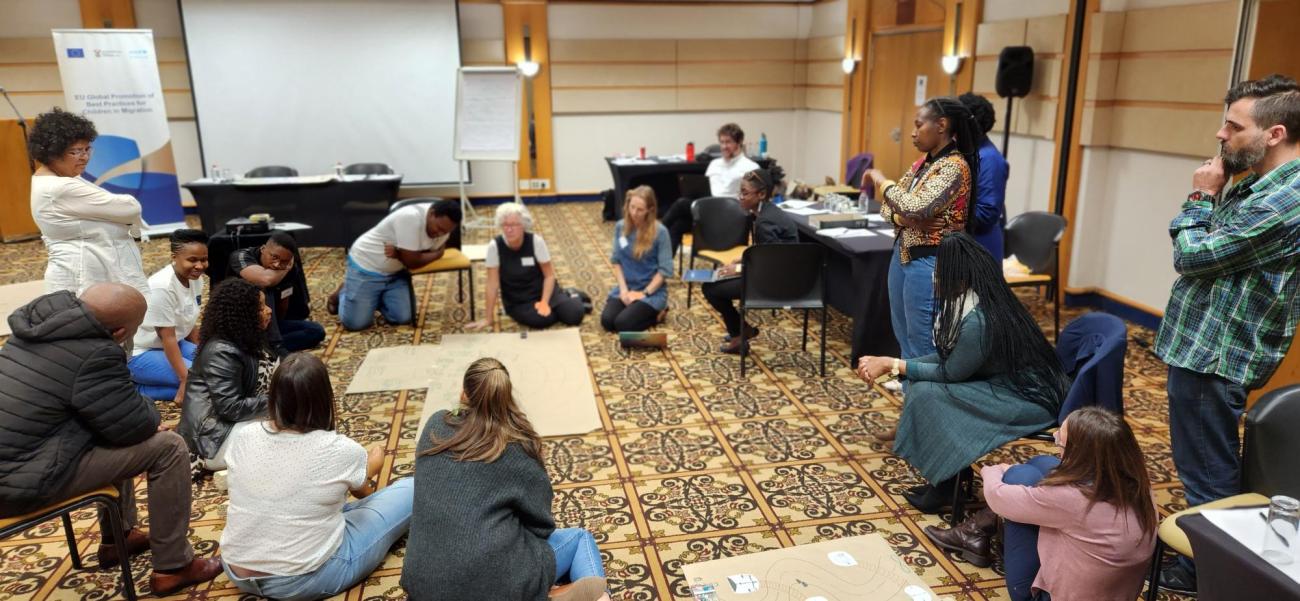“The journeys of children on the move are complex, layered and very necessary to document” emphasizes UNICEF South Africa Child Protection Manager Hellen Nyangoya at the opening of a two-day workshop on Storytelling hosted by the Scalabrini Centre and UNICEF.
The European Union (EU) Global Promotion of Best Practices for Children in Migration is a multi-country project funded by the EU and co-founded and implemented by a partnership between the United Nations High Commissioner for Refugees (UNHCR) and UNICEF. Also referred to as ‘Children on the Move’ this programme supports child migrants who are among society’s most vulnerable.
UNICEF South Africa has partnered with the Scalabrini Centre of Cape Town to document what has been learned about supporting children on the move over the time of the EU Best Practice Project between 2020 and 2023.
Bringing together a cross section of participants who are working with children on the move nationally, the workshop encouraged participants to, in the words of Ms. Nyangoya “add detail to and bring alive the information you have given us in the interviews, deepen your relationships and share successes, challenges and frustrations.”
There was consensus that sessions like this provide a rare opportunity to “breathe and reflect” as described by Yasmin Rajah from Refugee Social Services in Durban who also noted that “the power of language is critical and cannot be underestimated”.
The stories of children who have been forced through various factors to leave their homes are nuanced and layered and require a necessary degree of understanding and empathy when describing and writing about it. The European Union (EU) Global Promotion of Best Practices for Children in Migration Among the issues raised was the importance of not constantly depicting children on the move, as cautioned by one of the participants, as “helpless victims with no agency of their own.”
Indeed, when telling these stories it is important to be cognizant of both the power of memories as well as the significant concepts of ‘belonging and safety’ and how these shape the experiences of children on the move.
With breakaway groups, open conversations and the physical drawing of narratives, the workshop was interactive and lively and included among its sessions:
- Being aware of ‘exceptionalising’ refugees vs. integrated (i.e. local children and children on the move)
- Understanding notions of alternative care – kinship/fostering care vs. institutions
- Being aware of how to use infographics in a compelling and useful manner
- Telling stories about particular children or adults that illustrate when best practice worked well e.g. how social workers or officials began to understand key ideas or how a good result was achieved for a child
- Understanding the very real experiences of migrant children who have to deal with ‘space-based loss’ and also ‘relational loss’ – and how to tell the stories of what this loss means
- The need to also share stories of the barriers that got in ones way e.g. bureaucratic challenges to accessing documents.
- The need to think through one’s recommendations to make processes work better
Participants were reminded, through the engaging sessions, that their life-changing work is worth documenting effectively so that the necessary support is given, attitudes shaped, and meaningful difference made in our collective quest to leave no child behind.





